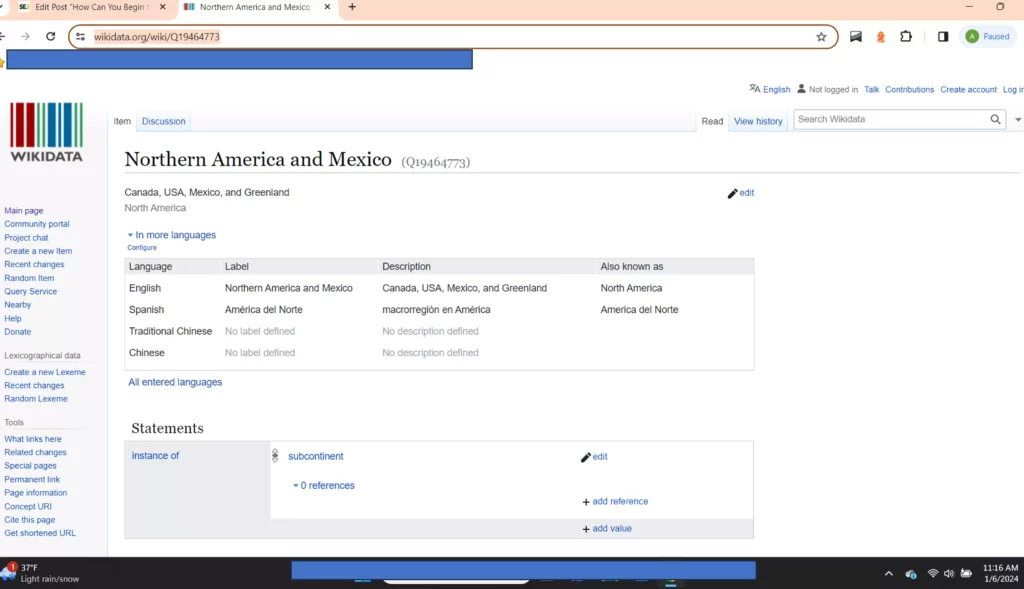

Last updated on

Today’s SEO inquiry comes from Mark:
“In what ways can a small business, currently only visible in its local markets, expand its presence into new markets? How would you advise such a company to improve its visibility in a different area?”
Mark, your question is pertinent, and the solution lies in a straightforward approach that is applicable across local, national, and international scopes.
Expanding into new markets may entail the need for foreign language adaptations, which I’ll touch upon briefly in this response. Now, let’s delve into the fundamentals of driving SEO traffic in novel markets, assuming it involves regional expansion rather than introducing new products. Subsequently, I’ll provide tailored suggestions for local, national, and international endeavors.
When expanding your business, whether at a local or national level, it’s crucial to update your service area information accordingly. Google offers a helpful guide on managing service areas, which you can find here.
Keeping your operating hours current across your website, landing pages, and Google Business Profile (GBP) is essential. This ensures that search engines accurately comprehend your service locations and availability, enabling customers to access your offerings with ease.
Launching new profiles for each new location is advisable. However, it’s important to verify ownership for each profile and diligently maintain them, updating details such as holiday hours and closures to provide accurate information to potential customers.
To enhance your site’s visibility and assist search engines in understanding your service areas and organization details, consider implementing service area or organization schema markup on your pages. Ensure that you fill out and regularly update the “area served” fields by referencing relevant Wikipedia entries or Wikidata.
Wikidata provides comprehensive information on cities, counties, states, countries, and regions, facilitating the accurate definition of your product, service, or store locations.
By providing detailed information about your service areas and operating hours, you enable search engines to effectively showcase your business to users in those markets. Additionally, if your services cover all of North America (including the US, Mexico, and Canada), you can utilize a dedicated page for this purpose, streamlining the reference process.
Something quite odd is that according to Wikidata, “Greenland” is categorized under North America. While this is technically correct from a geographical standpoint, it doesn’t accurately reflect its political affiliation. Greenland is actually a territory of Denmark and, by extension, part of the European Union. Here’s a screenshot of the page with a date stamp to illustrate. Although this discrepancy probably won’t affect your ranking, I wanted to highlight it as an example because it might be perplexing why you’re referencing a page that includes Greenland, a location where your services aren’t offered.

In my opinion, meta descriptions don’t directly impact rankings, but they do influence click-through rates to your site when search engines use them. Title tags, on the other hand, have more significance and can affect rankings, especially when combined with other on-page elements.
When your meta description complements the region or market targeted by the title tag, it creates a compelling ad for users to click on. This is where meta descriptions become crucial.
For instance, if you’re targeting tourists and mention proximity to a specific landmark, it signals to them that your business is conveniently located. Consequently, they may choose to click on your listing over others with generic titles and descriptions, even if those listings rank higher.
This strategy applies across various industries, including retail, pharmacies, restaurants, housing, car rentals, and more. I’ve put together a guide for crafting localized meta descriptions and title tags to help with optimization in this regard.
This strategy offers a double benefit! Begin by researching local blogs, newspapers, and magazines, and then concentrate on securing features and mentions.
Being featured in local media outlets not only drives referral traffic and attracts customers to your business but also signals to search engines that you have established a presence in a new local market or expanded your reach. Additionally, there’s the possibility of gaining a backlink in some cases.
However, the quality and relevance of the backlink depend on the credibility of the linking site and the nature of the link itself.
As an extra advantage, consider displaying the logos of reputable media companies on your page if your business is featured. This can help build trust with potential customers, leading to increased conversions both online and in-store, particularly if they are deciding between multiple businesses to patronize.
For example, if you were to expand into Washington D.C., it would be beneficial to target publications like Washingtonian Magazine, Popville, or ARLnow. These are likely to be familiar and trusted by locals in our area.
Expanding your business footprint requires consideration of shifting demographics from one location to another. These changes may manifest in various factors such as race, religion, marital status, income levels, or age ranges, necessitating adjustments in your marketing approach.
If you offer services in multiple languages, ensure that your hreflang tags are correctly configured to direct users to the appropriate language version of your products, services, and content. Refer to Google’s guide for best practices in this regard.
Update your imagery to resonate with the demographics of your new customer base. Tailoring visuals to match the preferences and characteristics of the local population can enhance engagement and connection with your brand.
Additionally, review your messaging to ensure it resonates with the specific needs and preferences of your new audience. For instance, if your original location caters to a predominantly dual-income-no-kids (DINK) demographic, but your new location has a significant number of families with young children, consider highlighting kid-friendly features or promotions like “kids eat half-price.” However, maintain a consistent tone and messaging that aligns with the unique ambiance of each location – for the kid-friendly site, emphasize aspects of vibrancy and family-friendliness, while for the DINK location, focus on relaxation, tranquility, and sophistication.
Expanding a business or service can indeed be exhilarating, but it requires diligent effort to effectively attract traffic, customers, and sales. By catering to the specific needs of your new audience and consistently updating your content and code, you can maximize the success of your expansion efforts. I trust this guidance proves helpful in navigating your expansion journey.
Original news from SearchEngineJournal